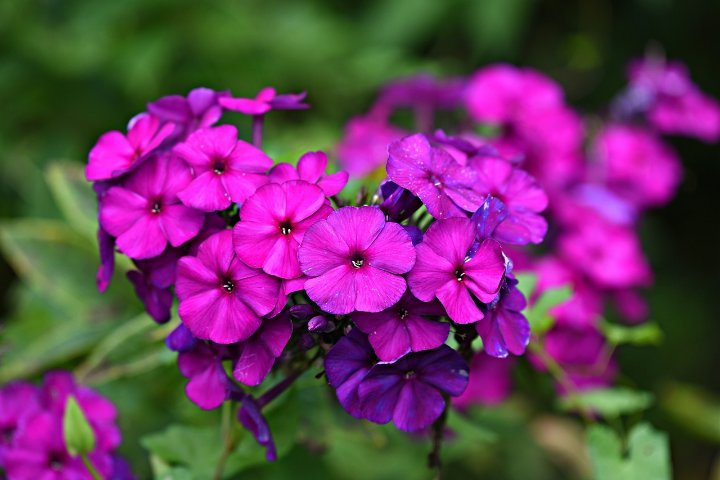Phlox, with its vibrant blooms and delightful fragrance, is a beloved addition to any garden or landscape. These versatile plants come in a variety of colors and sizes, making them suitable for a wide range of gardening applications, from borders and beds to containers and rock gardens. Let’s explore how to grow and care for these beautiful plants.
Best Phlox Varieties
| Image | Name | Rating | Shop |
|---|---|---|---|
 | Popstars Phlox |  | |
 | Mountain Phlox Flower Seeds |  | |
 | Annual Beauty Phlox Flower Seed Mix |  |
Phlox Hardiness Zones
Phlox plants are hardy in USDA zones 3-9, making them well-suited to a wide range of climates and growing conditions. Whether you live in a cooler northern region or a warmer southern area, you can find phlox varieties that will thrive in your garden. Choose the appropriate cultivars for your hardiness zone to ensure success with your phlox plants.
How Much Sun Do Phlox Need
Phlox plants thrive in partial to full sun conditions, requiring at least six hours of direct sunlight per day to bloom profusely. Plant them in a location where they can receive ample sunlight, such as a south-facing garden bed or along a sunny border. While phlox can tolerate some shade, they generally perform best when grown in full sun, producing more flowers and healthier foliage.
Phlox Soil Requirements
When it comes to soil, phlox prefers loamy, rich soil that is well-drained and moisture-retentive. Amend heavy or compacted soils with organic matter such as compost or aged manure to improve drainage and soil structure. Additionally, phlox plants thrive in soil with a neutral to slightly acidic pH range, typically between 6.0 and 7.0. Test the soil pH before planting and adjust it if necessary to create optimal growing conditions for your phlox.
Phlox Plant Spacing
Phlox plants can vary in height, ranging from low-growing ground covers to taller varieties that reach up to 5 feet tall. When planting phlox, space them according to the mature size of the variety, ensuring that each plant has enough room to grow and spread. Typically, taller varieties require more spacing to prevent overcrowding and allow for proper air circulation. Follow spacing recommendations provided on the plant label or seed packet for best results.
Phlox Temperature Requirements
While phlox plants are generally hardy and adaptable, they may suffer during hot summer days, especially in regions with high temperatures and humidity. To help them thrive in warmer climates, provide afternoon shade or partial shade during the hottest part of the day to protect them from intense sunlight and heat stress. Additionally, ensure adequate soil moisture to help phlox plants withstand hot and dry conditions.
Phlox Fertilizer Requirements
Phlox plants are relatively low-maintenance and typically don’t require additional fertilizer if grown in nutrient-rich soil. However, if your soil is poor or lacking in nutrients, you can apply a balanced fertilizer once a year in early spring to encourage healthy growth and flowering. Use a slow-release fertilizer or organic compost to provide essential nutrients without risking over-fertilization, which can lead to excessive foliage growth at the expense of flowers.
Phlox Water Requirements
Phlox plants are slightly drought-tolerant once established, but they benefit from regular watering, especially during periods of hot, dry weather. Water phlox deeply and thoroughly, ensuring that the soil is evenly moist but not waterlogged. Water at the base of the plants to avoid wetting the foliage, which can lead to fungal diseases such as powdery mildew. Mulching around the base of phlox plants can help retain soil moisture and suppress weeds, promoting healthy growth and flowering.
Phlox Humidity Requirements
While phlox plants can tolerate a wide range of humidity levels, high humidity can increase the risk of fungal diseases such as powdery mildew. To prevent mildew problems, ensure proper air circulation around the plants by spacing them adequately and avoiding overcrowding. Additionally, water phlox plants in the morning to allow foliage to dry quickly and reduce the risk of moisture-related diseases.
Phlox Pests and Diseases
Phlox plants are relatively resistant to pests, but they may occasionally encounter issues with rabbits and deer, which may feed on the foliage. To deter these pests, consider using fencing or repellents to protect your phlox plants. Additionally, phlox plants are susceptible to powdery mildew, especially in humid conditions. To prevent mildew problems, maintain good air circulation, avoid overhead watering, and remove any infected plant material promptly.
In conclusion, growing and caring for phlox is a rewarding experience that allows gardeners to enjoy the beauty and fragrance of these charming flowers. By providing the right growing conditions, including full sun, well-drained soil, and regular watering and maintenance, you can cultivate healthy and vibrant phlox plants that enhance the beauty of your garden. With their long-lasting blooms and easy-care nature, phlox is sure to become a favorite in your outdoor space.














